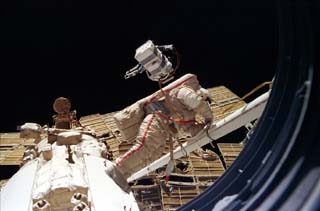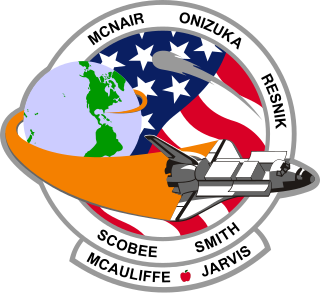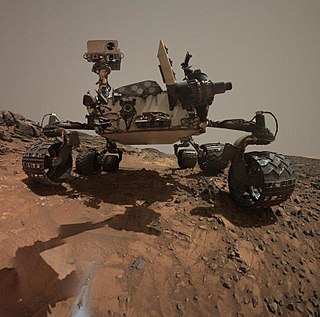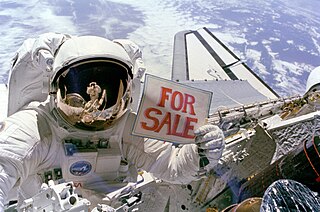 W
WThis is a partial list of artificial materials left on the Moon, many during the missions of the Apollo program. The table below does not include lesser Apollo mission artificial objects, such as a hammer and other tools, retroreflectors, Apollo Lunar Surface Experiments Packages, or the commemorative, artistic, and personal objects left by the twelve Apollo astronauts, such as the United States flags, the commemorative plaques attached to the ladders of the six Apollo Lunar Modules, the silver astronaut pin left by Alan Bean in honor of Clifton C. Williams whom he replaced, the Bible left by David Scott, the Fallen Astronaut statuette and memorial plaque placed by the crew of Apollo 15, the Apollo 11 goodwill messages disc, or the golf balls Alan Shepard hit during an Apollo 14 moonwalk.
 W
WThis article provides a timeline of the Cassini–Huygens mission. Cassini was a collaboration between the United States' NASA, the European Space Agency ("ESA"), and the Italian Space Agency ("ASI") to send a probe to study the Saturnian system, including the planet, its rings, and its natural satellites. The Flagship-class uncrewed robotic spacecraft comprised both NASA's Cassini probe, and ESA's Huygens lander which was designed to land on Saturn's largest moon, Titan. Cassini was the fourth space probe to visit Saturn and the first to enter its orbit. The craft were named after astronomers Giovanni Cassini and Christiaan Huygens.
 W
WThese are tables of space probes which have been deliberately destroyed at their objects of study, typically by hard landings or crash landings at the end of their respective missions and/or functionality. This suicidal endeavor not only precludes the hazards of orbital space debris and planetary contamination, but also provides the opportunity in some cases for terminal science given that the transient light released by the kinetic energy may be available for spectroscopy; the physical ejecta remains in place for further study. Even after soft landings had been mastered, NASA used crash landings to test whether Moon craters contained ice by crashing space probes into craters and testing the debris that got thrown out.
 W
WUncrewed spaceflights to the International Space Station (ISS) are made primarily to deliver cargo, however several Russian modules have also docked to the outpost following uncrewed launches. Resupply missions typically use the Russian Progress spacecraft, European Automated Transfer Vehicles, Japanese Kounotori vehicles, and the American Dragon and Cygnus spacecraft. The primary docking system for Progress spacecraft is the automated Kurs system, with the manual TORU system as a backup. ATVs also use Kurs, however they are not equipped with TORU. Progress and ATV can remain docked for up to six months. The other spacecraft — the Japanese HTV, the SpaceX Dragon and the Northrop Grumman Cygnus — rendezvous with the station before being grappled using Canadarm2 and berthed at the nadir port of the Harmony or Unity module for one to two months. Under CRS phase 2, Cargo Dragon will dock autonomously at IDA-2 or 3 as the case may be. As of January 2021, Progress spacecraft have flown most of the uncrewed missions to the ISS.
 W
WInternational Space Station spacewalks are major events in the building and maintaining of the orbital laboratory. Spacewalks are performed to install new components to the International Space Station (ISS), to re-wire systems, modules, and equipment, and to monitor, install, and retrieve scientific experiments.
 W
WThis is a list of all human spaceflights throughout history. Beginning in 1961 with the flight of Yuri Gagarin aboard Vostok 1, human spaceflight occurs when a human crew flies a spacecraft into outer space. Human spaceflight is distinguished from spaceflight generally, which entails both crewed and uncrewed spacecraft.
 W
W W
WSeveral records and firsts in spaceflight have been documented since the field's beginnings in the 20th century. Achievements in spaceflight are broadly divided into crewed and uncrewed categories. Records involving animal spaceflight have also been noted in earlier experimental flights, typically to establish the feasibility of sending humans to outer space.
 W
WMir was a Soviet and later Russian space station, operational in low Earth orbit from 1986 to 2001. With a mass greater than that of any previous space station, Mir was constructed from 1986 to 1996 with a modular design, the first to be assembled in this way. The station was the largest artificial satellite orbiting the Earth until its deorbit on 21 March 2001, a record now surpassed by the International Space Station (ISS). Mir served as a microgravity research laboratory in which crews conducted experiments in biology, human biology, physics, astronomy, meteorology and spacecraft systems in order to develop technologies required for the permanent occupation of space.
 W
WHuman spaceflights were vital to the operation of Mir, allowing crews and equipment to be carried to and from the space station. Mir was visited by a total of 39 crewed missions, comprising 30 Soyuz flights and 9 Space Shuttle flights. These missions carried both long-duration crew members flying principal expeditions and short-term visitors. Many of the crew who visited Mir used different spacecraft to launch than they did to land; the first such examples were Aleksandr Viktorenko and Muhammed Faris who flew up in Soyuz TM-3 and landed a week later in Soyuz TM-2 on 30 July 1987. The largest crew aboard Mir simultaneously was 6, which first occurred with the launch of Soyuz TM-7 on 26 November 1988 and lasted for just over three weeks.
 W
WThis is a timeline of first orbital launches by country. While a number of countries have built satellites, as of 2019, eleven countries have had the capability to send objects into orbit using their own launch vehicles. Russia and Ukraine inherited the space launchers and satellites capability from the Soviet Union, following its dissolution in 1991. Russia launches its rockets from its own and foreign (Kazakh) spaceports.
 W
WThis article gives a concise timeline of rocket and missile technology.
 W
WA sample-return mission is a spacecraft mission to collect and return samples from an extraterrestrial location to Earth for analysis. Sample-return missions may bring back merely atoms and molecules or a deposit of complex compounds such as loose material ("soil") and rocks. These samples may be obtained in a number of ways, such as soil and rock excavation or a collector array used for capturing particles of solar wind or cometary debris.
 W
WThis is a timeline of Solar System exploration ordered by date of spacecraft launch. It includes:All spacecraft that have left Earth orbit for the purposes of Solar System exploration, including lunar probes. A small number of pioneering or notable Earth-orbiting craft.
 W
WThis is a list of active space probes which have escaped Earth orbit. It includes lunar space probes, but does not include space probes orbiting at the Sun–Earth Lagrangian points. A craft is deemed "active" if it is still able to transmit usable data to Earth.
 W
WThis article lists verifiable spaceflight-related accidents and incidents resulting in human fatality or near-fatality during flight or training for crewed space missions, and testing, assembly, preparation or flight of crewed and robotic spacecraft. Not included are accidents or incidents associated with intercontinental ballistic missile (ICBM) tests, fatality or injury to test animals, uncrewed space flights not resulting in human fatality or serious injury, or Soviet or German rocket-powered aircraft projects of World War II. Also not included are alleged unreported Soviet space accidents, which are considered fringe theories by a majority of historians.
 W
WThis is a list of cumulative spacewalk records for the 30 astronauts who have the most extra-vehicular activity (EVA) time. The record is currently held by Anatoly Solovyev of the Russian Federal Space Agency, with 82:22 hours from 16 EVAs, followed by NASA's Michael Lopez-Alegria with 67:40 hours in 10 EVAs. This list is current as of July 21, 2020. The RSA designation includes spacewalks under the earlier Soviet space program.
 W
WThis list contains all spacewalks performed between 12 May 2000 and 22 October 2014 where an astronaut fully or partially left a spacecraft.
 W
WSTS-51-L Mission timeline is a detailed timeline of events from the ignition of Challenger's main engines to the remote destruction of the two solid rocket boosters, and includes a transcript of crew conversations from the cockpit voice recorder on board the orbiter.
 W
WThe timeline of the Galileo spacecraft spans its launch in 1989 to the conclusion of its mission when it dove into and destroyed itself in the atmosphere of Jupiter in 2003.
 W
WTimeline of longest spaceflights is a chronology of the longest spaceflights. Many of the first flights set records measured in hours and days, the space station missions of the 1970s and 1980s pushed this to weeks and months, and by the 1990s the record was pushed to over a year and has remained there into the 21st century.
 W
WTimeline for the Mars Reconnaissance Orbiter (MRO) lists the significant events of the launch, aerobraking, and transition phases as well as subsequent significant operational mission events; by date and brief description.
 W
WThe Mars Science Laboratory and its rover, Curiosity, were launched from Earth on November 26, 2011. As of January 7, 2021, Curiosity has been on the planet Mars for 2994 sols since landing on August 5, 2012. (See Current status.)
 W
WOpportunity is a robotic rover that was active on the planet Mars from 2004 to 2018. Launched on July 7, 2003, Opportunity landed on Mars' Meridiani Planum on January 25, 2004 at 05:05 Ground UTC, three weeks after its twin Spirit (MER-A), also part of NASA's Mars Exploration Rover Mission, touched down on the other side of the planet. While Spirit became immobile in 2009 and ceased communications in 2010, Opportunity exceeded its planned 90 sol duration of activity by 16 years, 249 days. Opportunity continued to move, gather scientific observations, and report back to Earth until 2018. What follows is a summary of events during its continuing mission.
 W
WThe following is a timeline of important events in the history of private spaceflight, including important technical as well as legislative and political advances. Though the industry has its origins in the early 1960s, soon after the beginning of the Space Age, private companies did not begin conducting launches into space until the 1980s, and it was not until the 21st century that multiple companies began privately developing and operating launch vehicles and spacecraft in earnest.
 W
WRosetta is a space probe designed to rendezvous with the comet 67P/Churyumov–Gerasimenko, perform flybys of two asteroids, and carry lander Philae until its landing on 67P. This page records a detailed timeline of this mission.
 W
WSince the first human spaceflight by the Soviet Union, citizens of 41 countries have flown in space. For each nationality, the launch date of the first mission is listed. The list is based on the nationality of the person at the time of the launch. Only 3 of the 41 "first flyers" have been women. Only three nations have launched their own crewed spacecraft, with the Soviets/Russians and the American programs providing rides to other nations' astronauts. Twenty-seven "first flights" occurred on Soviet or Russian flights while the United States carried thirteen.
 W
WThe James Webb Space Telescope is a planned international 21st century space observatory. It is intended to be a premier observatory of the 2020s, combining the largest mirror yet on a near-infrared space telescope with a suite of technologically advanced instruments from around the world. JWST is expected to cost at least $8.8 billion, including design, construction, and five years of operations or International contributions. Its likely peak year for funding was probably 2014, when the project used more than $650 million.
 W
WThis is a timeline of first achievements in spaceflight from the first intercontinental ballistic missile through the first multinational human-crewed mission—spanning the era of the Space Race. On July 31, 1956, the United States announced its intention to launch an artificial satellite during the International Geophysical Year. Two days later the Soviet Union announced its intention to do the same. The Soviet Union launched Sputnik 1 on October 4, 1957, beating the United States and stunning people all over the world. Both countries had various successes. The US landed astronauts on the Moon in 1969.